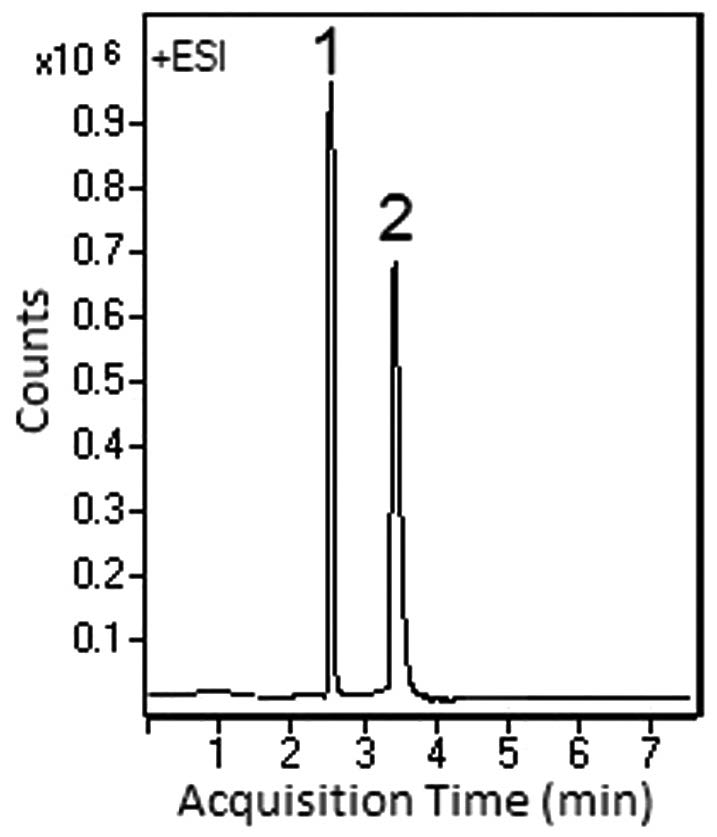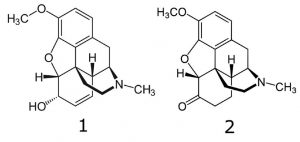LCMS Separation of isobaric Drugs Found in Urine
Codeine and Hydrocodone which are Isobaric Drugs (i.e. the same m/z value) were separated using this AppNote. Multiple Samples (n=5) were prepared and analyzed. The results showed excellent Reproducibility (RSDs < 2.5%).
The Method in this AppNote, after validation, can be used in Forensic Toxicological Laboratories to determine recent exposure to drugs. Urine collection is a non-invasive procedure and drug concentration in this media is usually much higher than in other matrices.
Peaks:
1. Codeine 300.1594 m/z [M+H]+
2. Hydrocodone 300.1594 m/z [M+H]+
Method Conditions
Column: Cogent Bidentate C18 2.o™, 2.2μm, 120Å
Catalog No.: 40218-05P-2
Dimensions: 2.1 x 50mm
Mobile Phase:
—A: DI Water / 0.1% Formic Acid (v/v)
—B: 50:50 Acetonitrile / Methanol / 0.1% Formic acid (v/v)
Gradient:
| Time (minutes) | %B |
| 0 | 5 |
| 4 | 50 |
| 5 | 80 |
| 6 | 80 |
| 7 | 5 |
Post Time: 3 minutes
Injection vol.: 1μL
Flow rate: 0.4mL / minute
Detection: ESI – POS – Agilent 6210 MSD TOF Mass Spectrometer
Sample Preparation: The drugs were spiked into urine at the level of 50ng / mL.
Extraction method: Spiked urine sample was loaded into SPE cartridge I (Clean Screen Xcel™ purchased from UCT Bristol, PA, USA) and eluted with 0.78mL of Acetonitrile, 200µL of 2-Propanol, 20µL of Ammonia. After the elution, the Sample was dried under Nitrogen gas and dissolved in 100µL of 50:50 Methanol / DI Water / 0.1% Formic Acid. Before injection, the samples were filtered through a 0.45μm Nylon Syringe Filter (MicroSolv Tech Corp.).
Note: Codeine is an opiate used widely because of its antitussive properties as well as others. It is extensively used in cough syrup but it can cause drug addiction if abused. Hydrocodone is a semisynthetic opioid drug used as a narcotic painkiller. It is related to codeine but more potent.
Attachment
No 315 Codeine and Hydrocodone in Blood Analyzed with LCMS pdf 0.2 Mb Download File




